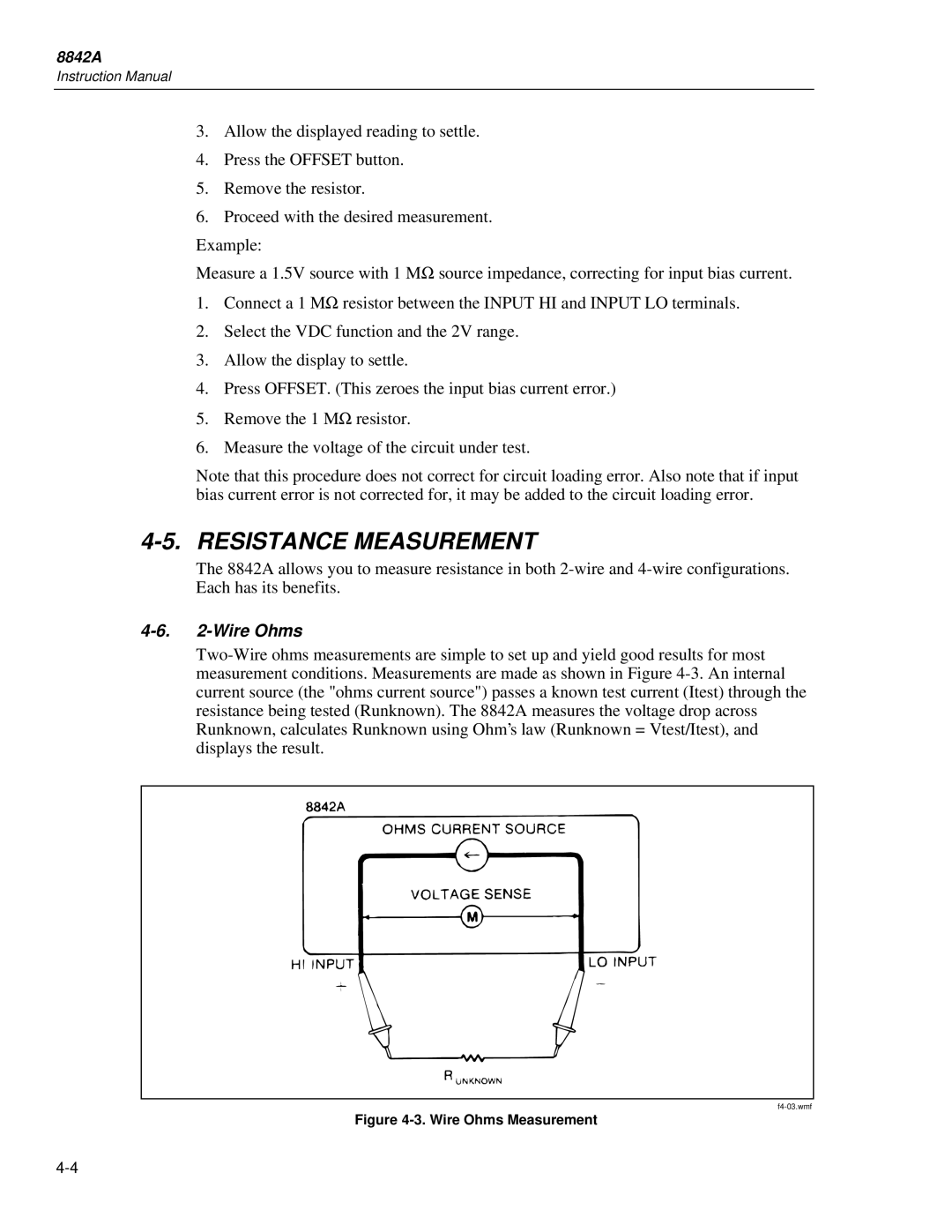
8842A
Instruction Manual
3.Allow the displayed reading to settle.
4.Press the OFFSET button.
5.Remove the resistor.
6.Proceed with the desired measurement.
Example:
Measure a 1.5V source with 1 MΩ source impedance, correcting for input bias current.
1.Connect a 1 MΩ resistor between the INPUT HI and INPUT LO terminals.
2.Select the VDC function and the 2V range.
3.Allow the display to settle.
4.Press OFFSET. (This zeroes the input bias current error.)
5.Remove the 1 MΩ resistor.
6.Measure the voltage of the circuit under test.
Note that this procedure does not correct for circuit loading error. Also note that if input bias current error is not corrected for, it may be added to the circuit loading error.
4-5. RESISTANCE MEASUREMENT
The 8842A allows you to measure resistance in both
